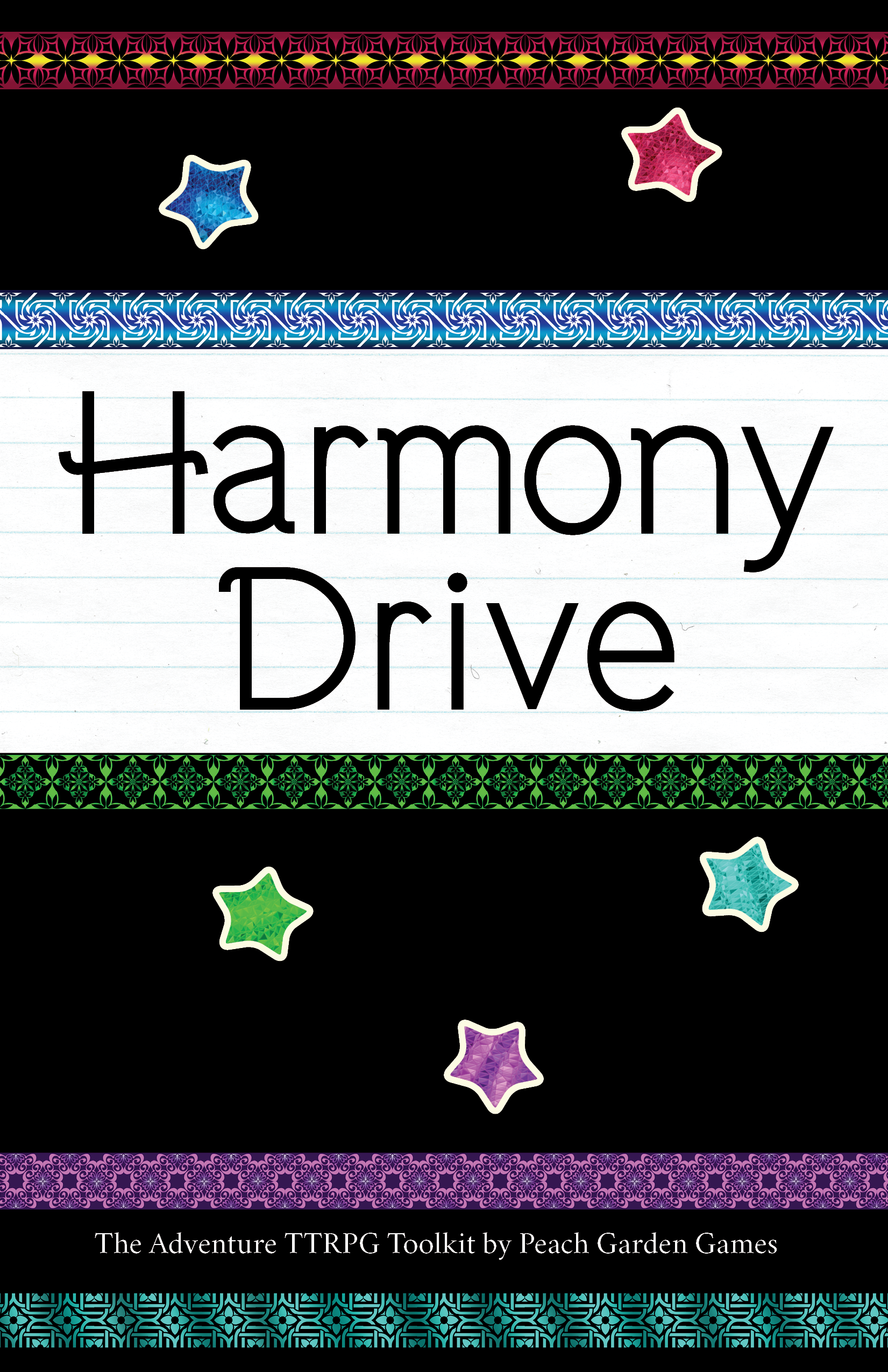Harmony Drive games revolve around the following three pillars:
Self-Expression
The magic system and encounter system are intentionally built to give players freedom to engage with problems in their own style. Your game should let players be themselves, and do things in their own way, without being left behind by their team.
Teamwork
Harmony Drive games are written to encourage the players to work together. Whether they’re combining their powers to cast combo spells or using their skills to overcome an opponent together, characters in Harmony Drive games succeed or fail as a team.
Difficult Choices
The Edge Success system is built so that players have the freedom to choose failure. The combat system is built so that players can choose to take big hits. Good things and bad things happen to the players, and both of these are in the players’ hands to choose. The GM’s job is to give them difficult choices.
Dice Mechanic
The dice mechanic in Harmony Drive is a pool of six-sided dice. When players want to take an uncertain action, they build a dice pool.
- One die for every point they have in the relevant stat (I call them Facets, but feel free to rename them)
- One die for every character level if they have a relevant Skill
- Two dice if they can mark off a relevant part of their Key.
Any dice that come up a 5 or a 6 are counted as Successes. A challenging task can require 1-3 Successes to complete (outside combat).
Any dice that come up 2, 3, or 4 are ignored.
Any dice that come up 1 are counted as Edge Successes. When a player rolls a 1, they inform the GM, who offers them a consequence. If the player chooses to take the GM’s consequence, they count the 1 as a Success. This consequence can be mechanical, like losing HP, or it can be narrative, like upsetting an NPC or getting lost in the woods. The important part is that the player is presented with a difficult choice.
Casting Spells
A character has a list of words called “Spell Pieces”. These may come from a class, or they may be chosen from a list. They should probably have around six. These are Personal Spell Pieces.
The scene also has its own Spell Pieces. The GM comes up with these when describing a place, and gives them to the players when they ask. These are Terrain Spell Pieces.
In order to cast a spell, a player takes one Terrain Spell Piece from the GM and one Personal Spell Piece from their own list. They describe what they want this two-word phrase to do, and then they work with the GM to decide how much of their Magic the spell will cost.
Then, the player describes what the spell looks like, feels like, and any other sensory effects.
The good news is you won’t have to write any spells for this system. The players will be creating spells as they go, in a conversation with their GM. You will have to do three things:
- Choose Spell Pieces for characters or classes that are thematic and convey your game’s core ideas. Use different kinds of words, or words that can be interpreted in different ways. If your game is gritty and post-apocalyptic, maybe use words like “Barren” and “Choking”. If your game is calm and verdant, maybe use words like “Growing” and “Soft”.
- Decide how your GM Spell Pieces work. In the base system, they are attached to the scene to encourage players to reach out and interact with the world. But in your game, GM Spell Pieces might be attached to an encounter, or to a deity ruling over a situation. Choose something that you want the players to mix with, reach out to.
- Decide what happens when your players use too much magic. In Heroic Chord, this is called Scatter because is causes a dissociative state. To use an earlier example, though, perhaps the GM Spell Pieces come from deities. Maybe reaching out to that deity too much incurs a debt, or possession.
The GM should cost spells based on how far they go to solve problems. Heroic Chord includes this list (which is based on Scatter going from 0 to 10)
- Add one success to the Advantage Pool in combat – Gain 1 Scatter
- Advance a Goal in combat – Gain 1 Scatter per difficulty of the Goal (see Combat, PN)
- Target gains / loses 1 die on a certain action – Gain 1 Scatter
- A small boon – Gain 1 Scatter
- A stepping stone to solving the problem – Gain 2-3 Scatter
- A solution to a small problem, a large step toward a large problem – Gain 5-7 Scatter
- Solve a large problem outright – Gain 7+ Scatter
If other players would like to add to a spell, they can contribute their own words. If players choose to combine their magic like this, then all the involved players get a say in how the spell works and what it does, and the players get to split the Magic cost however they like, as long as everyone involved pays a portion of it.
To Do – The Basics
What is the concept of your world?
What will you call the Magic resource?
What happens when Magic is all spent? How is it regained?
Where do players get Spell Pieces from?


